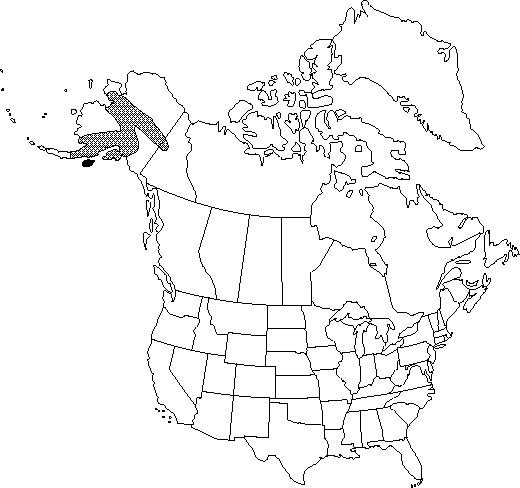Betula kenaica
Bot. Gaz. 27: 481. 1899.
Trees, to 12 m; crowns narrow. Bark dark reddish brown, sometimes becoming pinkish or grayish white, smooth, in maturity exfoliating in thin sheets; lenticels dark, horizontally expanded. Twigs without taste and odor of wintergreen, slightly to moderately pubescent, often with scattered resinous glands. Leaf blade ovate to nearly deltate with 2–6 pairs of lateral veins, 4–5(–7.5) × 2.5–4.5 cm, base rounded to cuneate, margins coarsely doubly serrate to dentate, teeth relatively sharp, apex acute to short-acuminate; surfaces abaxially sparsely to moderately pubescent, especially along major veins and in vein axils, often with scattered resinous glands. Infructescences erect to nearly pendulous, cylindric, 2–5 × 0.5–1 cm, shattering with fruits in fall; scales ciliate, lobes diverging at middle, nearly equal in length, strongly divergent. Samaras with wings as broad as to somewhat narrower than body, broadest near middle, not extended beyond body apically. 2n = 70.
Phenology: Flowering late spring.
Habitat: Rocky slopes in the subalpine zone
Elevation: 0–300 m
Discussion
The relationship of Betula kenaica to other white-barked birches is not well understood, although it and the following species are evidently closely allied to B. papyrifera, from which they have likely been derived. Betula kenaica differs from B. papyrifera primarily in its smaller stature and in its smaller, blunter-tipped, more coarsely and regularly serrate leaves.
Betula ×hornei Butler (= Betula kenaica W. H. Evans × B. nana Linnaeus), variously intermediate between its parents, is common throughout the range of B. kenaica (which is mostly overlapped by that of B. nana).
Selected References
None.
